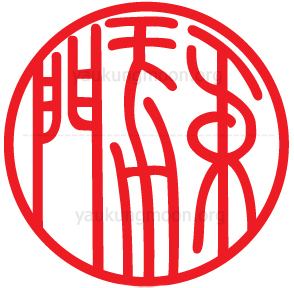 | ||
Yau Kung Mun (also Yau Kung Moon) 柔功門 is a Shaolin martial art.
Contents
- Origins
- Stylistic Distinctions
- Yau Kung Mun organizations
- Hong Kong
- United States
- Australia
- Canada
- Finland
- References
The Chinese term, 柔功門, can be roughly translated as "the style of flexible power". The Hong Kong and US schools usually use the romanization "Yau Kung Moon" or "Yau Kung Mon", whereas the Australian schools use the romanization "Yau Kung Mun".
Origins
Yau Kung Mun martial arts were introduced to the public in 1924. Prior to that time, the history extends back into the Tang Dynasty (618 - 907 A.D.) in the Sil Lum Temple of Honan province. The style was originated by a Buddhist monk named Ding Yang, who being very humble and withdrawn, gave no name to the style. The secrets of the style were selectively passed on to one disciple per generation within the confines of the Temple for hundreds of years into the Ching Dynasty (1644 - 1911 A.D.). When the Manchu conquered China to begin the Qing Dynasty, the officials and sympathizers of the former Ming emperor took refuge in the temples. To prevent attempts to restore the Ming to power, the Manchu emperor ordered the destruction of the temples. Many monks were killed, the rest fled; some to die of starvation. One surviving monk was Doe Sung. Doe Sung was the principal disciple of Yau Kung Mun, and had been the chosen representative of the Temple to meet all challengers. Through Doe Sung, the style survived continuing to pass to only one disciple per generation. (See diagram). It was through the priest Teat Yun that the style was given its name, and was presented to the public by accepting as his disciple the first lay person in Yau Kung Mun history,Grandmaster Ha Hon Hung. ["Yau Kung Mun Kung Fu, an Overview" by Wan Tak Kei and Dennis Lew]
Ha Hon Hung opened up the first Yau Kung Mun Academy at the Pearl River Martial Arts Club in Guangzhou (Canton) and formed the Ha Hon Hung Sports Association. Yau Kung Mun primarily gained popularity in the Cantonese-speaking region of China, but remains somewhat uncommon outside of the region. It is taught in several countries but is most active in Guangzhou, Hong Kong, the US and Australia.
Stylistic Distinctions
The Yau Kung Mun System is representative of southern styles in being based on a low, stable horse stance. It employs many upper body techniques and most kicks are kept low. The YKM stance (Chien Gung Ma) resembles the familiar "ding gee ma" or Kung-Fu side horse but back arch is more pronounced and the shoulders are thrown forward with arms and hands protecting the chest and groin area. Defense is natural since the critical areas of the body are behind the protective wall of the shoulders and arms. Kicks or punches delivered within range of the practitioner would still be out of range of vital areas. This same stance also lends itself readily to offense as the arms are already in the attack position and the back leg has the distance of leverage required for powerful kicking.
Yau Kung Mun has both an external and internal training. However, like most other styles of Kung-Fu renowned for their internal power, the individual system's manifestation of internal power is still somewhat secretive. The majority of early forms are primarily external while the most advanced forms evolve into primarily internal. The external training consists of 13 fist and 28 weapon sets. Besides the 18 classical weapons (see the Eighteen Arms of Wushu), weapon sets using common farm implements (the hoe, long chair, spade, etc.) are also part of the system.
Yau Kung Mun organizations
Yau Kung Mun schools now exist around the world. The main schools can be found in Hong Kong, Australia, United States, South America, Canada and Finland.
Hong Kong
The original organization started by Ha Hon Hung is operating in Hong Kong, China.
United States
During the 1960s, two of Grandmaster Ha Kwok Cheung's top disciples, Wong Cheung and Wan Tak Kei, immigrated to the United States from Hong Kong. Both Wong and Wan continued their training and teaching of the art - with Master Wong establishing a club in San Francisco and Master Wan creating a group in Los Angeles.
Since that time, both masters has taught thousands of students. Some of the oldest students from Wong and Wan include: Bill Lee, Loi Lok Fu, Lok Sang Lee, Michael Lau, David Louie, Kevin Quock, Dennis Lew and Bob Gin. In 2000, Sifu Lok Sang Lee promoted two of his students, Susan Yee and Richard Ow, to the rank of Sifu so that they can continue to teach this traditional style.
Australia
In the 1970s, Yau Kung Mun Australia was established by Leung Cheung (Chinese: 梁祥), a top disciple of Ha Hon Hung (夏漢雄). This association was one of the first Chinese martial arts associations to publicly perform Southern and Northern style Lion Dances in Australia.
Yau Kung Mun Australia is now led by Sifu James Leung (梁鉅), Percy To (杜偉明) and Sifu Garry Hearfield
Canada
The Canadian branch of Yau Kung Moon was established by Master Wan in 2006. Naming two Sifu's Ryan S. and Ranie L. in Winnipeg, MB, Canada to carry on the tradition.
Finland
The Finland branch of Yau Kung Moon was run by Master To . his Sifu is Great Grand Master Ha Hon Hung's disciple in Guangzhou.
